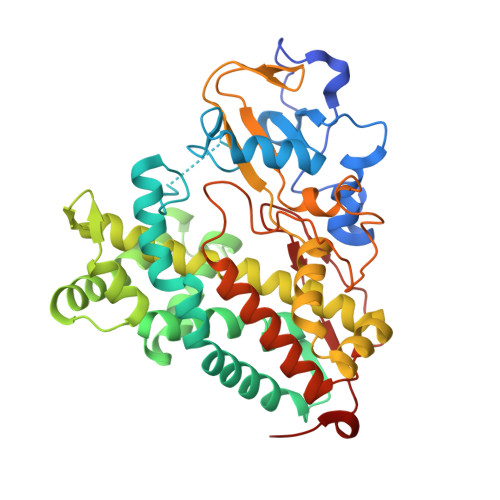P450cam visits an open conformation in the absence of substrate.
Lee, Y.T., Wilson, R.F., Rupniewski, I., Goodin, D.B.(2010) Biochemistry 49: 3412-3419
- PubMed: 20297780
- DOI: https://doi.org/10.1021/bi100183g
- Primary Citation of Related Structures:
3L61, 3L62, 3L63 - PubMed Abstract:
P450cam from Pseudomonas putida is the best characterized member of the vast family of cytochrome P450s, and it has long been believed to have a more rigid and closed active site relative to other P450s. Here we report X-ray structures of P450cam crystallized in the absence of substrate and at high and low [K(+)]. The camphor-free structures are observed in a distinct open conformation characterized by a water-filled channel created by the retraction of the F and G helices, disorder of the B' helix, and loss of the K(+) binding site. Crystallization in the presence of K(+) alone does not alter the open conformation, while crystallization with camphor alone is sufficient for closure of the channel. Soaking crystals of the open conformation in excess camphor does not promote camphor binding or closure, suggesting resistance to conformational change by the crystal lattice. This open conformation is remarkably similar to that seen upon binding large tethered substrates, showing that it is not the result of a perturbation by the ligand. Redissolved crystals of the open conformation are observed as a mixture of P420 and P450 forms, which is converted to the P450 form upon addition of camphor and K(+). These data reveal that P450cam can dynamically visit an open conformation that allows access to the deeply buried active site without being induced by substrate or ligand.
Organizational Affiliation:
Department of Molecular Biology, 10550 North Torrey Pines Road, The Scripps Research Institute, La Jolla, California 92037, USA.















